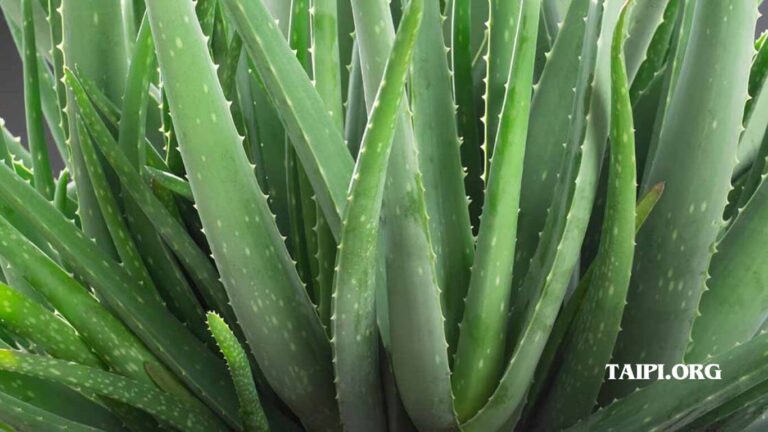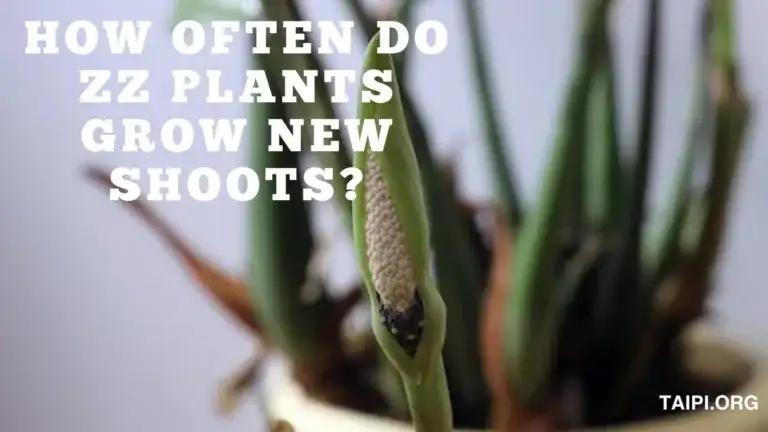Why is My Pothos Drooping?
YOU can praise your pothos plants as you please but one thing is for sure – pothos drooping, a condition that is likely to get all houseplants. The good news is you can reverse this wilting condition and grow a healthy pothos plant. But what causes pothos leaves drooping?
Pothos drooping is caused by improper watering, poor drainage, lighting issues, temperature stress, and nutrient deficiency among other causes.
Pothos Leaves Drooping? The 7 Main Reasons
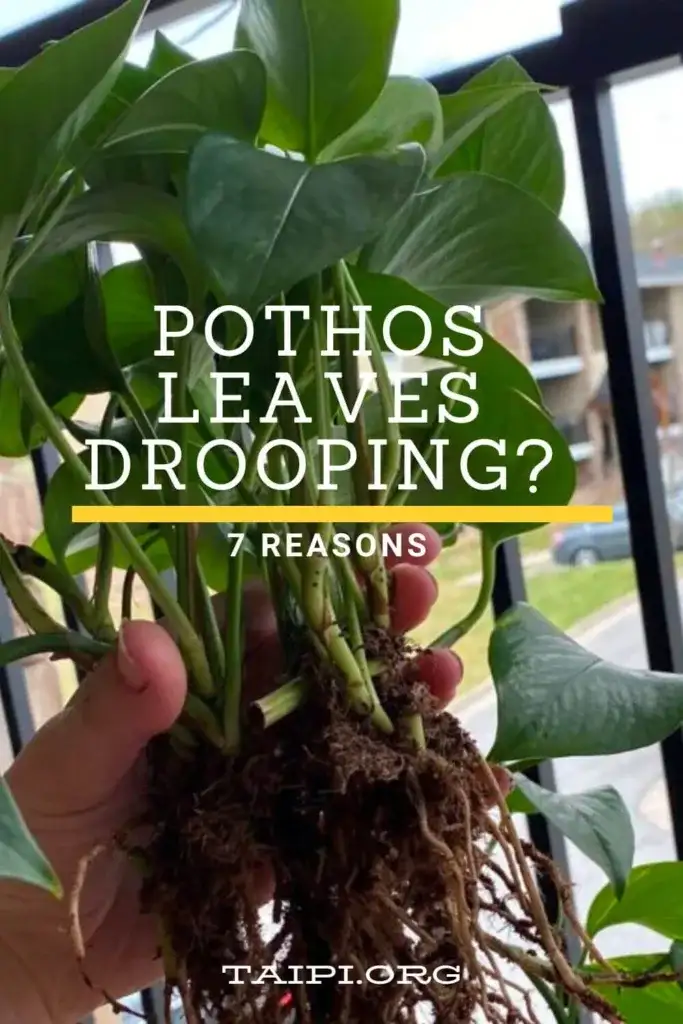
Here are the main reasons why you are having a drooping pothos plant in your house, a situation you can reverse.
1. Overwatering
Pothos plants are susceptible to root rot if their roots remain constantly saturated. Overwatering can lead to drooping leaves and eventual decline of the plant.
2. Underwatering
Conversely, if a pothos plant doesn’t receive enough water, its leaves may droop as a response to stress. While pothos plants are relatively tolerant of dry conditions, they still require regular watering to remain healthy.
3. Poor Drainage
Pothos plants prefer well-draining soil. If the soil in the pot retains too much moisture or lacks proper drainage, it can lead to root rot and drooping leaves.
4. Lighting Issues
Pothos plants thrive in bright, indirect light. But if you place your pothos plant in low-light conditions for an extended period, it may exhibit drooping leaves as a sign of stress.
Compare: Does Pothos Like Direct Sunlight?
5. Temperature Stress
Pothos plants prefer temperatures between 65-85°F (18-29°C). Sudden temperature fluctuations or exposure to drafts can stress the plant and cause drooping.
6. Nutrient Deficiency
A lack of essential nutrients, particularly nitrogen, can cause the leaves of a pothos plant to droop. Fertilizing the plant with a balanced, water-soluble fertilizer meant specifically for the pothos plant, can help address this issue.
7. Pests or Diseases
Pothos plants can be affected by pests such as spider mites, mealybugs, or aphids, as well as diseases like root rot or bacterial leaf spot. Infestations or infections can cause drooping leaves and other symptoms of distress.
How to Fix a Drooping Pothos Plant
If your pothos plant is drooping, there are several steps you can take to help revive it and encourage healthy growth:
Check the Soil Moisture
Stick your finger into the soil to check its moisture level. If the soil feels dry about an inch below the surface, it’s time to water. If the soil is still moist, allow it to dry out slightly before watering again.
Water Appropriately
Water your pothos plant thoroughly, allowing excess water to drain out of the pot. Ensure that the pot has drainage holes (pictured ⬆) to prevent water from accumulating at the roots, which can lead to root rot.
Improve Drainage
If the potting mix retains too much water, repot your pothos plant in a container with drainage holes and use a well-draining potting mix.
Adjust Lighting
Pothos plants thrive in bright, indirect light. Move your plant to a brighter location if it’s not receiving enough light. However, avoid placing it in direct sunlight, as this can scorch the leaves.
Check Temperature and Humidity
Ensure that your pothos plant is not exposed to sudden temperature fluctuations or drafts, as these can stress the plant. Maintain a consistent temperature range of 65-85°F (18-29°C) and provide moderate humidity.
You Might Also Like: Does Pothos Like Humidity?
Fertilize Regularly
Give your pothos plant-balanced, water-soluble fertilizer according to the instructions on the package. This can help address any nutrient deficiencies and promote healthy growth.
Inspect for Pests and Diseases
Check your pothos plant carefully for signs of pests such as spider mites, mealybugs, or aphids, as well as diseases like root rot or bacterial leaf spot. Treat any infestations or infections promptly to prevent further damage.
Prune as Needed
Remove any yellowing or damaged leaves. This can help improve the overall appearance of the plant and encourage new growth.
Why is My Pothos Droopy After Transplant?
Drooping pothos plant is not uncommon after transplanting. Transplant shock is a common issue that many plants, including pothos, experience when you move them to a new pot or environment.
Here are a few reasons why your pothos leaves are drooping after transplanting:
Root Disturbance
When you transplant a pothos plant, its roots undergo significant disturbance.
This disturbance can temporarily disrupt the plant’s ability to take up water and nutrients, leading to drooping leaves as the plant adjusts to its new environment.
Moisture Stress
Transplanting can also disrupt the balance of moisture in the soil. Even if you water the plant after transplanting, the roots may not be able to absorb water effectively initially, leading to temporary drooping.
Shock from Change in Environment
Moving a plant to a new pot or location can expose it to changes in light, temperature, and humidity. These environmental changes can stress the plant and cause it to droop temporarily as it adjusts to its new surroundings.
Root Damage
During the transplanting process, the plant’s roots may sustain damage. Even careful handling can cause some level of root damage, which can affect the plant’s ability to absorb water and nutrients.
To help your pothos plant recover from transplant shock and minimize drooping:
- Ensure that the new pot has good drainage to prevent waterlogged soil
- Water the plant appropriately, keeping the soil consistently moist but not waterlogged
- Place the plant in a location with bright, indirect light, as pothos plants prefer this type of lighting
- Maintain a consistent temperature and humidity level to minimize stress on the plant
- Avoid fertilizing the plant immediately after transplanting, as this can further stress the roots
Why is My Pothos Droopy After Watering?
If your pothos plant is droopy after watering, there could be several reasons for this:
Overwatering
One common reason for droopy pothos leaves after watering is overwatering.
Pothos plants prefer slightly moist soil, but they are susceptible to root rot if the soil remains consistently soggy.
Overwatering can suffocate the roots and prevent them from absorbing oxygen, leading to drooping leaves.
Root Rot
Overwatering can lead to root rot, which is a fungal disease that affects the roots of the plant.
Symptoms of root rot include droopy leaves, yellowing, and wilting. If your pothos plant is suffering from root rot, you may notice a foul odor coming from the soil and the roots may appear dark and mushy.
Poor Drainage
If the pot your pothos is in doesn’t have proper drainage holes, excess water can accumulate at the bottom of the pot, leading to waterlogged soil and drooping leaves.
Underwatering
While less common, underwatering can also cause droopy leaves in pothos plants. If the soil becomes too dry between waterings, the leaves may wilt and droop.
However, in the case of underwatering, the drooping should improve after watering.
Do the following to address droopy pothos leaves after watering:
- Check the moisture level of the soil before watering. Stick your finger about an inch into the soil. If it feels dry, it’s time to water; if it’s still moist, wait a few more days before watering again
- Ensure that your pothos plant is in a pot with good drainage holes to allow excess water to escape
- If you suspect root rot, carefully remove the plant from its pot and inspect the roots. Trim away any dark, mushy roots and repot the plant in fresh, well-draining soil
- Adjust your watering schedule to prevent overwatering or underwatering. Allow the soil to dry out slightly between waterings, but don’t let it become bone dry
- Keep an eye on environmental conditions such as light, temperature, and humidity, as they can also affect the watering needs of your pothos plant
Pothos Drooping Frequently Asked Questions (FAQs)
Q: Why are my pothos leaves drooping even though I water regularly?
A: Drooping pothos leaves despite regular watering could indicate issues such as overwatering, poor drainage, root rot, or underwatering. It’s important to check the moisture level of the soil and ensure that the plant isn’t sitting in waterlogged soil, which can suffocate the roots.
Q: What should I do if my pothos plant is drooping after being transplanted?
A: Transplant shock is common in pothos plants after being moved to a new pot or environment. To help your pothos recover from transplant shock, ensure proper watering, provide adequate light, maintain optimal temperature and humidity levels, and avoid disturbing the plant excessively during its recovery period.
Q: Can low light cause my pothos plant to droop?
A: Yes, pothos plants prefer bright, indirect light. If placed in low-light conditions for an extended period, pothos plants may become leggy and droop. Providing adequate light is crucial for the plant’s overall health and growth. If your pothos is not receiving enough light, consider moving it to a brighter location while avoiding direct sunlight, which can scorch the leaves.
So, Why is My Pothos Droopy?
Pothos plants exhibit drooping leaves due to various factors such as overwatering, poor drainage, root rot, transplant shock, environmental conditions, and inadequate light.
Understanding the underlying causes of pothos drooping and taking appropriate measures to address them is essential for promoting the plant’s health and vitality.
By maintaining proper watering practices, providing adequate light, ensuring good drainage, and addressing any issues related to transplant shock or environmental stress, you can help your pothos plant thrive and display lush, vibrant foliage.
Monitoring the plant’s condition and adjusting as needed will contribute to its overall well-being and longevity in your indoor space.

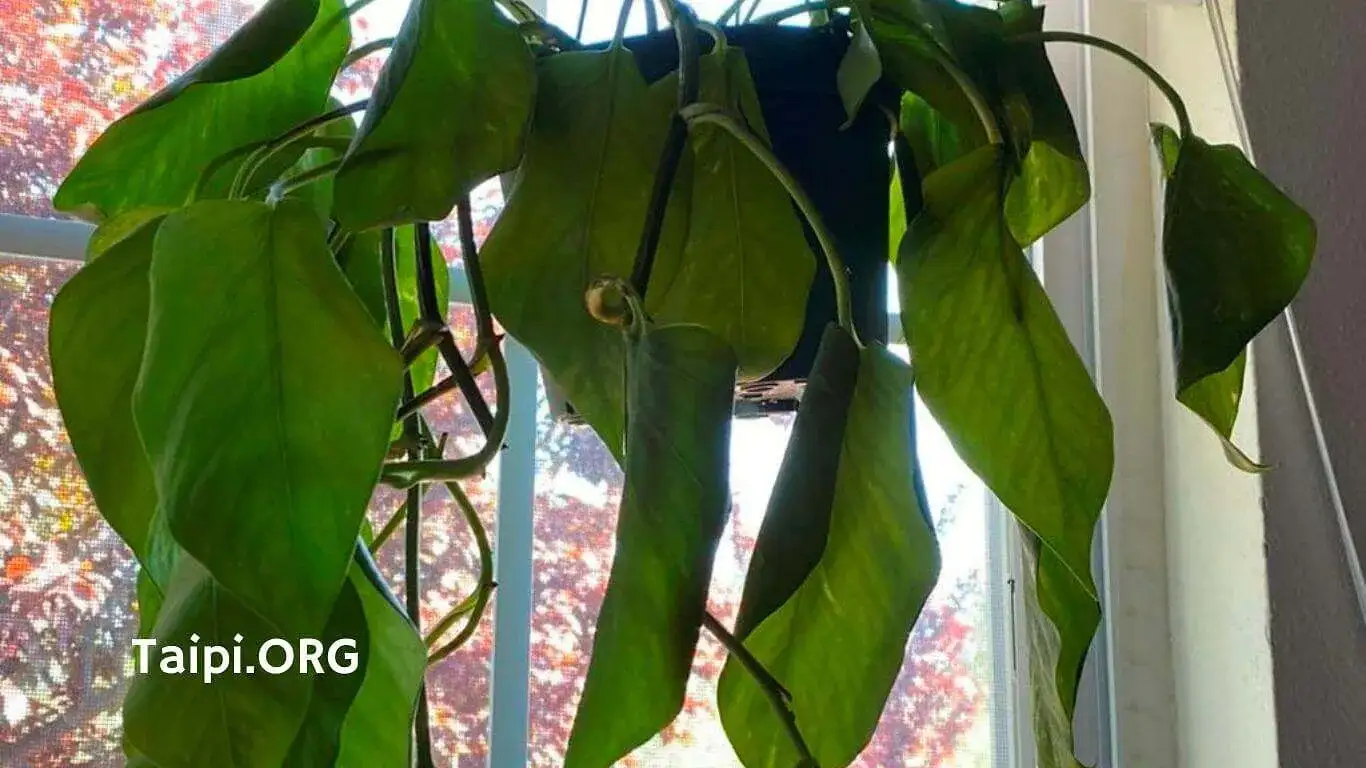
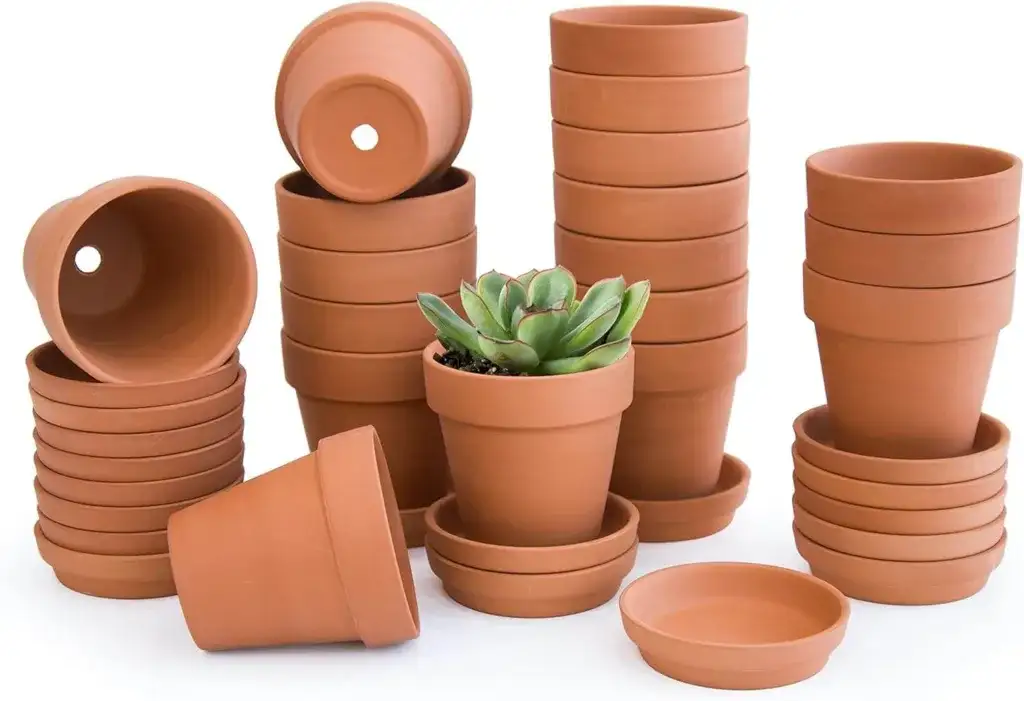
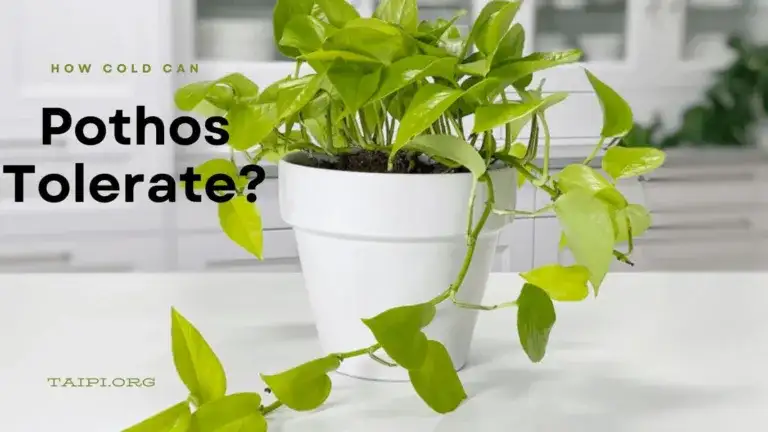

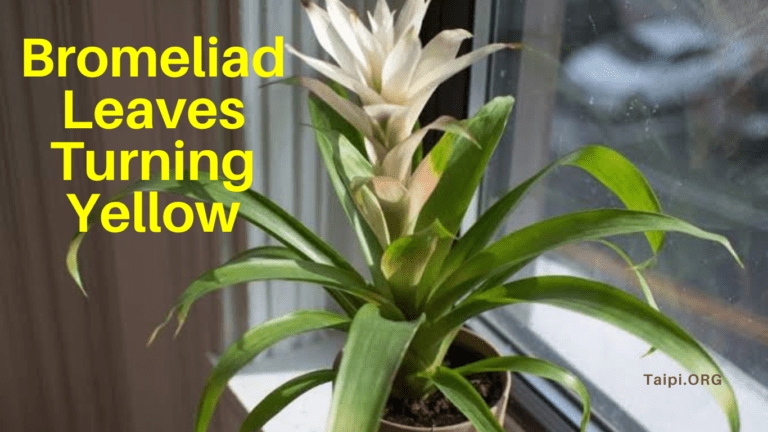
![How to Make Song of India Plant Bushy [Get Almost Instant Results]](https://taipi.org/wp-content/uploads/2024/05/Home-30-1-768x432.jpg)
